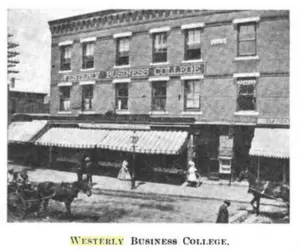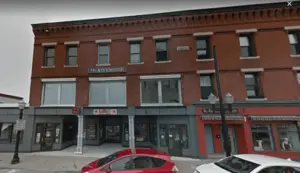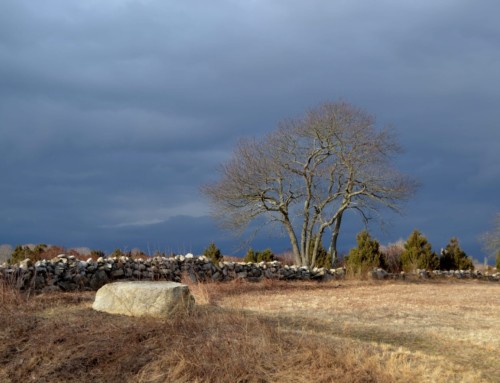On January 21, 1898, an announcement was published in the Westerly Sun saying that Professors C.W. Wales and H.L. Gifford of Easton, Pennsylvania would open a business college in downtown Westerly.[1] According to the newspaper, “this is a branch of education that will be greatly appreciated by many of our young people and will give them an opportunity to get a practical business training without leaving home.” Amazingly, the school was slated to open just two weeks later, on February 7, 1898, with classes being held in the Barber Memorial Building on High Street.[2]
Two days after the school’s initial announcement, C.W. Wales provided more details about the institution to the Sun’s reporters. Wales indicated that the courses of study would include all types of bookkeeping, shorthand writing, and English studies, which would be divided into three separate departments.[3] Tuition was set at $60 for one year of day classes and $30 for one year of night classes (approximately $1,700 and $850 respectively in modern dollars).

“Westerly Business College” Pitman’s Journal: Devoted to Shorthand, Typewriting and Commercial, Vol. 4, pg. 338.
After a one-week delay, the school began operations on February 14, 1898.[4] Shortly after its initial opening, the school outgrew its space in the Barber building and began operating out of the Wells Block on Broad Street [The Wells Block occupied 8-14 Broad Street, where High Street Yoga now stands].[5]
During the 1899 school year, the Westerly Sun extolled the work of the school, claiming that they graduated many talented bookkeepers, stenographers, and typists.[6] At first, the school occupied only the third floor of the Wells Block, but after increased enrollment in 1899, they were forced to expand their property into the second floor.[7] The college held a celebration marking its first anniversary on February 13, 1899, and it was attended by more than 150 people.[8] Entertainment for the evening was provided by the college’s orchestra.[9]
In July 1902, after more than four years as the proprietor of the Westerly Business College, C.W. Wales retired, selling the college to professor George LaMunyon of Norwich. Under Wales’ leadership, the school once had 52 students enrolled at one time and during his tenure, more than one hundred students had graduated from the college.[10]
LaMunyon was a graduate of the Lincoln Normal School in Lincoln, Nebraska, and went on to teach at Eastman’s College in Poughkeepsie, NY until 1900, at which time he took up a position as a professor at the Norwich Business College. It was noted that LaMunyon would be assisted in his work at the Westerly college by his wife, who also had several years of teaching experience.[11] LaMunyon also planned to offer courses in stenography, typewriting, and English, as well as shorthand writing, with the choice of Pitman or Gregg style being made available to students.
LaMunyon’s operation of the College continued until the Fall of 1907, when the school was purchased by a man named C.H. Young of Ontario, Canada. Young was identified as a “staunch supporter of Isaac Pitman shorthand,” which he believed took six to eight months of coursework to master.[12] Young was also president of the Westerly Methodist Sunday School but resigned due to the increased work involved in operating the college.[13]
Under Young’s Guidance, students in shorthand courses were also taught “how to operate single and double keyboard typewriters, how to use a letterpress, mimeograph and tabulator, and general principles of filing.”[14] Students under the commercial department were taught “single and double entry bookkeeping, how to handle commercial paper, and making accurate and rapid computations.”[15]
In addition to the above, students were also taught spelling, business correspondence, and punctuation.[16] In order to graduate, students were required to write at a rate of one hundred words per minute in Pitman shorthand, transcribe five dictated letters “almost accurately” at a rate of 25 words per minute, and type-write at a rate of 40 words per minute for a half hour.[17]
The college’s growth in the first decade of the 20th-century was apparent based on the development of several societies, including a literary and debating society which was introduced in February 1908.[18] In March 1910, Jacob Seidner, son of the famed mayonnaise entrepreneur, Otto Seidner, and student at the college, entered a blindfolded contest in ‘touch-typing.’ According to an account of the event, “the students showed excellent training under Prof. and Mrs. Hinman.”[19]
Later that same year, an entry in the Norwich Bulletin, indicated that “a large number of young people of the borough [of Stonington] are attending the Westerly Business College.”[20] The following year, two students, Daisy Coon and Phyllis Horn, gave an exhibition of their skill in shorthand and typewriting. Daisy was able to record 180 words per minute in shorthand, while Phyllis typed 76 words per minute while blindfolded.[21]
Due in large part to significant growth, Rev. John M. Collins was appointed as the field representative for the New London, Norwich, and Westerly business colleges.[22] Another sign of the school’s growth was the introduction of athletic teams. In June 1914, “the Westerly Business College nine” played the Old Mystic Young Men’s Association baseball team.[23]
Young operated the school until some time before May 1916, at which point Walter Edwin Canfield was cited as the school’s proprietor. Canfield was also the owner and operator of business colleges in Norwich and New London.[24] The last reference that could be located which describes the school as actively operating is the 1922 College and Private School Directory of the United States, which indicates that Canfield was still serving as Principal.[25] Despite its unknown fate, it is clear that the Westerly Business College had an impact on the community, as it graduated many students who went on to serve in positions both in Westerly and throughout the country.
[su_accordion class=””] [su_spoiler title=”Footnotes” open=”no” style=”default” icon=”plus” anchor=”” class=””]
[1] “Business College” Westerly Sun, 21 January 1898.
[2] “Westerly Business College: A Change in Its Management, Mr. Wales, Its Founder, Retiring.” Westerly Sun, 22 August 1902.
[3] “Business College Card” Westerly Sun, 23 January 1898.
[4] “Business College Card” Westerly Sun, 23 January 1898.
[5] “Westerly Business College: A Change in Its Management, Mr. Wales, Its Founder, Retiring.” Westerly Sun, 22 August 1902.
[6] “Believers in Expansion: The Westerly Business College to Add Another Room to Its Quarters in the Wells Block” Westerly Sun, 9 July 1899.
[7] “The First Anniversary” Westerly Sun, 16 February 1899.
[8] “The First Anniversary” Westerly Sun, 16 February 1899.
[9] “The First Anniversary” Westerly Sun, 16 February 1899.
[10] “Westerly Business College: A Change in Its Management, Mr. Wales, Its Founder, Retiring.” Westerly Sun, 22 August 1902.
[11] “Westerly Business College: A Change in Its Management, Mr. Wales, Its Founder, Retiring.” Westerly Sun, 22 August 1902.
[12] “Westerly Business College” Pitman’s Journal: Devoted to Shorthand, Typewriting and Commercial, Vol. 4, pg. 338.
[13] “Westerly Business College” Pitman’s Journal: Devoted to Shorthand, Typewriting and Commercial, Vol. 4, pg. 338.
[14] “Westerly Business College” Pitman’s Journal: Devoted to Shorthand, Typewriting and Commercial, Vol. 4, pg. 338.
[15] “Westerly Business College” Pitman’s Journal: Devoted to Shorthand, Typewriting and Commercial, Vol. 4, pg. 338.
[16] “Westerly Business College” Pitman’s Journal: Devoted to Shorthand, Typewriting and Commercial, Vol. 4, pg. 338.
[17] “Westerly Business College” Pitman’s Journal: Devoted to Shorthand, Typewriting and Commercial, Vol. 4, pg. 338.
[18] “New Literary Society Formed” Westerly Sun, 20 February 1908.
[19] “Stonington: Railroad and Highway Improvements—Local Students Do Good Work in Typewriting Test” Norwich Bulletin, 14 March 1910.
[20] “Stonington” Norwich Bulletin, 8 September 1910.
[21] “Showed Their Speed Here.” Norwich Bulletin, 17 June 1911.
[22] “Westerly”Norwich Bulletin, 4 October 1912.
[23] “To Play Westerly.” Norwich Bulletin, 6 June 1914.
[24] “Principal Canfield Attending Big Meeting of Educators” Norwich Bulletin, 27 May 1916.
[25] Myers, Harry J., College and Private School Directory of the United States and Canada, Volume 13 (1922), pg. 237.
[/su_spoiler] [/su_accordion]







